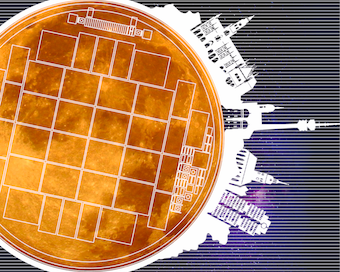Speaker
Description
Silicon is the standard material for particle detector sensors. Especially in high radiation environments diamond is a suitable alternative. In comparison to silicon it is more radiation hard but a smaller signal is generated per particle. Planar pixelated diamond detectors, read out by the FE-I4 chip, are installed in the ATLAS experiment. The current status and the performance of the Diamond Beam Monitor (DBM) of ATLAS will be presented.
One problem with diamond is the small signal and the high trapping probability of charge carriers. To further improve the diamond sensors a 3D electrode configuration penetrating the bulk is under investigation. The electrodes are fabricated by femtosecond laser pulses which transform locally the diamond into graphite. Within ATLAS a group of institutes are developing a 3D diamond detector with the FE-I4 as read-out chip. The production and status of a prototype will be presented.
